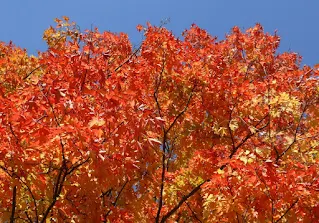When is Autumn Weather in South Africa
Autumn Weather in Africa Autumn in Africa just like any other place. In the southern hemisphere of Africa, seasons are opposite to those of Europe and North America.

When is Autumn Weather in South Africa
About the Causes of Seasons and Weather in Africa
Autumn in Africa just like any other place around the world, it is a season between summer and winter where the temperatures gradually decrease, please fall from the trees and animals begin that preparation for winter. Southern Africa is located in the southern hemisphere. The Southern Hemisphere is the half of Earth that is south of the Equator and about 60% of Africa lies in the Southern Hemisphere.
Angola, Botswana, Burundi, ESwatini, Lesotho, Madagascar, Malawi, Mauritius, Mozambique, Namibia, Rwanda, Seychelles, South Africa, Tanzania, Zambia, and Zimbabwe are all totally located in the Southern Hemisphere. The Democratic Republic of the Congo, Gabon, Republic of the Congo, Equatorial Guinea, Kenya, São Tomé and Príncipe, Somalia and Uganda are mostly or faintly located in the Southern Hemisphere.
Autumn in Cape Town South Africa is from March to April, in North America, autumn traditionally starts on September 21 and ends on December 21. The autumn season in South Africa is marked by gloriously vivid scenery, warm pleasant weather and crisp, cool mornings and evenings. Autumn in Cape Town South Africa is warm and dry with days getting shorter and the temperature cooling as it gets closer to winter.
Cape Town is a coastal city in South Africa and is the second most crowded urban area in South Africa, after Johannesburg. South Africa is surrounded by water masses; all coastline temperatures are moderated and have small temperature ranges.
The Earth's movement around the Sun causes the seasons but it does not affect the temperatures during the season. During autumn the sunrays hit the Earth at a shallow angle because the sun is lower in the sky this causes the sun rays to spread out more and the amount of direct energy that hits it's less because the sun rays are not as intense.
Also, longer nights and shorter days prevent the Earth from warming up this causes temperatures to cool. As opposed to summer, the days are long and this allows the Earth to heat up faster. We have autumn because of the tilt of the earth axis.
It is a myth that Africa is always hot. Africa has season just like any other continent on Earth. In some places such as Egypt, the season will not be as pronounced. Seasons are the opposite on either side of the Equator so when it is fall in the northern hemisphere in the southern hemisphere it is spring.
In Cape Town South Africa in August, the average temperature is 55 degrees Fahrenheit or 13 degrees Celsius in Tallahassee Florida the average temperature in August is 85 degrees Fahrenheit 29 degrees Celsius.
Instead of looking at seasons, because seasons are too general when looking at the weather in Africa, look at climate zones. Africa is divided into six climatic zones that characterize the climate and the vegetation, Equatorial, Humid Tropical, Tropical, Semidesert (Sahalian), Mediterranean and Desert. Africa has a large variety of different climates influenced by latitudinal position, altitude, and distance from the ocean, prevailing wind, and ocean currents.
The ocean covers more than 70 % of the Earth’s surface. The ocean plays a major role in regulating the weather and climate of the planet. Oceans, in general, have a great influence on rainfall on a continental basis and an influence on temperatures along coastal margins.
Did you know?
In Southern Africa, spring is from September to December, summer from December to March, autumn from March to April and winter is from June to September.

|
| Autumn in South Africa |

|
| Autumn in South Africa leaves of gold and green |

|
| Autumn in South Africa |

|
| Autumn in the Western cape of South Africa |

|
| Autumn in Johannesburg South Africa |
Did you know? South Africa is a subtropical region, moderated by ocean on two sides of the triangle-shaped country and the altitude of the interior plateau. With diverse origins, cultures, languages, and religions in the 2011 census, 42.4% of the population described themselves as Colored, 38.6%, Black African, 15.7% White, and 1.4% Indian or Asian all delighting in Cape Town Autumn weather.
Together we build awareness that boost harmony, education, and success, below are more links to articles you will find thought provoking.
- Where is Shashamane Ethiopia the African Rastafarian Promised Land
- Cooking with shea butter oil
- Worst serial killers recorded in history are women
- Indigenous healers and plants used
- Night running illness or magic
- What is back to Africa

 Since 2007
Since 2007



